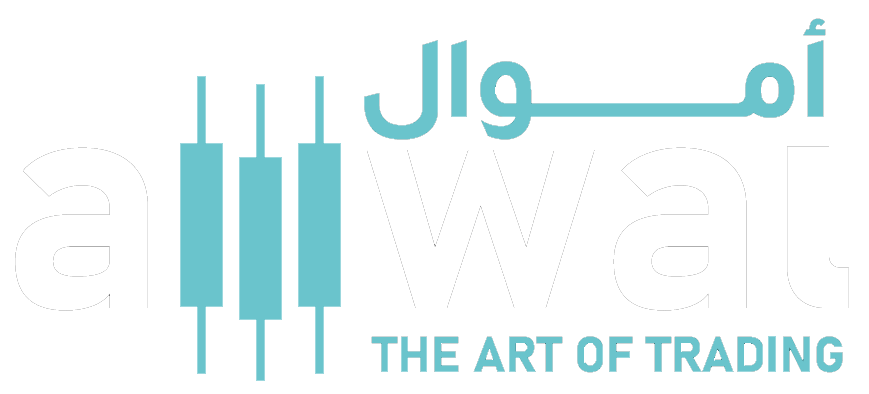
Blockchain and Cryptocurrencies
Introduction
Blockchain technology is an innovation that has transformed many industries, especially finance and trading. Since its first appearance in 2008 as part of the Bitcoin innovation, the technology has proven its effectiveness in providing secure and transparent solutions. With its increasing use in various fields such as cryptocurrencies, smart contracts, and decentralized trading, it is essential to understand how it works and how this technology can be exploited in today's world.
In this article, we will review the concept of blockchain, its uses in the world of cryptocurrencies and trading, the benefits this technology offers, the challenges it faces, and its future prospects.
Blockchain Concept
Blockchain is a decentralized and secure database that is used to record transactions across a network of interconnected computers. These transactions are organized into blocks, where each new record is added to previous blocks using Cryptographic Hashing. In this way, records can be secured in a way that makes it impossible to modify or delete previous transactions, providing a high level of security.
One of the salient characteristics of blockchain technology is decentralization, where no single entity controls the data or transactions. Instead, the data is distributed across a network of computers (called nodes), ensuring that everyone has a copy of the record. Whenever a new transaction is made, it is verified by the entire network, which enhances security and protects the system from attacks or manipulation.
Blockchain and Cryptocurrencies
Blockchain has been closely associated with digital currencies such as Bitcoin and Ethereum. Essentially, blockchain provides the means by which transactions between parties are conducted without the need for a traditional intermediary such as banks. Every transaction is recorded and documented on the public blockchain, ensuring full transparency for the parties involved.
Blockchain provides security and transparency through verifiable records by all parties, making it easy to detect any attempt to manipulate data. In addition, blockchain offers decentralization, which means that transactions take place without the need for a central authority such as banks or government agencies.
Blockchain Applications in Financial Trading
Blockchain is one of the main pillars of many digital trading platforms and represents the first step towards decentralized finance (DeFi). Decentralized exchange (DEX) provides an environment where users can exchange cryptocurrencies directly between each other without the need for traditional intermediaries
1 Smart contracts:
Smart contracts are computer programs that work automatically according to a set of predefined conditions. These contracts allow users to conduct financial transactions with others securely and efficiently without the need for third-party intervention. For example, if a certain condition in a smart contract is met, the transaction is automatically executed. Ethereum is one of the most prominent examples of networks that support smart contracts.
2. Decentralized Finance (DeFi):
The use of blockchain has given rise to decentralized financial applications, which allow users to conduct financial transactions such as lending, borrowing, insurance, etc. without the need for a traditional middleman. These applications run on networks like Ethereum, giving users access to innovative financial services at minimal costs.
3. Decentralized platforms (DEX):
Decentralized platforms allow users to exchange cryptocurrencies directly without the need for intermediaries. This system minimizes the costs associated with transactions and increases the speed at which they can be completed. Among the most popular platforms are Uniswap and Sushiswap, which allow users to trade directly through smart contracts, making the process more secure and transparent.
The benefits of blockchain technology in financial trading
1. Safety:
One of the main advantages of blockchain is that it provides high transaction security. Thanks to the use of hashing and encryption, transactions are protected against tampering attempts. After a transaction is added to the blockchain, it becomes part of the chain, making it difficult to alter the data.
2. Transparency:
Blockchain provides a public record of all transactions, which means anyone can verify which transaction occurred. This promotes trust in the system and minimizes fraud.
3. Speed and cost:
Blockchain reduces the need for intermediaries, which speeds up the transaction process and reduces transaction costs. In traditional payment systems, transactions can take days to complete, while in blockchain they can be completed in minutes.
4. Decentralization:
Another feature of blockchain is decentralization, which means that the network does not rely on any central authority such as banks. Instead, transactions are verified by a network of computers, which enhances security and prevents tampering.
Challenges to Blockchain in Financial Trading
1. Price fluctuations:
Cryptocurrencies are characterized by extreme price fluctuations. For example, the price of Bitcoin can change from several thousand dollars to several hundred in a short period of time. These fluctuations make it difficult to predict the future value of cryptocurrencies.
2. Laws and legislation:
In many countries, blockchain and cryptocurrencies face legal and regulatory challenges. While some countries focus on regulating cryptocurrencies, others decide to ban them outright. These restrictions significantly impact the growth of these technologies.
3. Energy consumption:
Mining on networks like Bitcoin requires huge amounts of energy. Mining relies on Proof of Work, which requires massive computational power in order to verify transactions and add them to the chain.
The Future of Blockchain in Financial Trading
Despite the current challenges, the future of blockchain looks promising. As technological development continues, transaction speed, data security, as well as energy consumption, are being improved. In addition, decentralized applications and smart contracts are expected to increase in the future, making it possible to conduct financial transactions with minimal cost and time.
Cryptocurrencies are also expected to become more widely accepted in the future. The emergence of digital banking systems and cooperation between central banks and private companies could stabilize the market and increase the use of cryptocurrencies in daily transactions.
Conclusion
Blockchain has transformed how we conduct financial transactions and digital trading. By providing high security, transparency, and low cost, this technology has managed to change the traditional form of financial trading. Despite its challenges, such as price volatility and legal issues, blockchain promises to provide innovative solutions in the future, making it an essential part of the global financial system.
References:
Location AWS - What is blockchain technology?
- Link: AWS - What is Blockchain?
- This website offers a simplified explanation of how blockchain works and its applications in many fields.
This website offers a simplified explanation of how blockchain works and its applications in many fields.
Location Borssatalk - Borssatalk Your comprehensive guide to understanding blockchain
- Link: Borssatalk - Blockchain Guide
- This site provides a detailed explanation of blockchain and how it works in many practical applications such as finance and cryptocurrencies.
Article from the Faculty of Arts Journal - Blockchain and how it can be used in scientific publishing
- Link: Faculty of Arts Journal - Blockchain in Scientific Publishing
- This article discusses the role of blockchain in ensuring the integrity of scientific research by recording data and results.
Location UN.org - Blockchain and Sustainable Growth
- Link: United Nations - Blockchain and Sustainable Growth
- This article looks at how blockchain can be used to achieve the Sustainable Development Goals and promote transparency in many processes.

3 Comments
Okay, there's something I need to know.
How does blockchain decentralization affect cryptocurrency stability and market volatility?
From my understanding of the topic
Decentralization means that no single entity controls the digital currency, everything is directly between people. This makes it transparent and secure, but its prices change quickly because it depends on supply and demand and no one controls the price like a bank.
And a mighty Mr. Money continued
Decentralization is the foundation of blockchain. It means that the blockchain does not depend on a single entity that controls it, such as a bank or a company, and all data and transactions are distributed to a network of users around the world. This makes information transparent, difficult to change or steal, and increases trust between people because everyone sees and participates in verifying transactions.